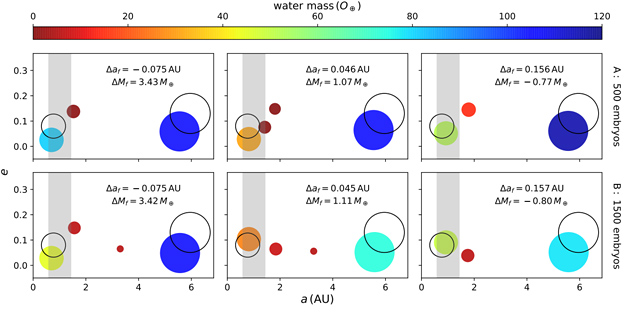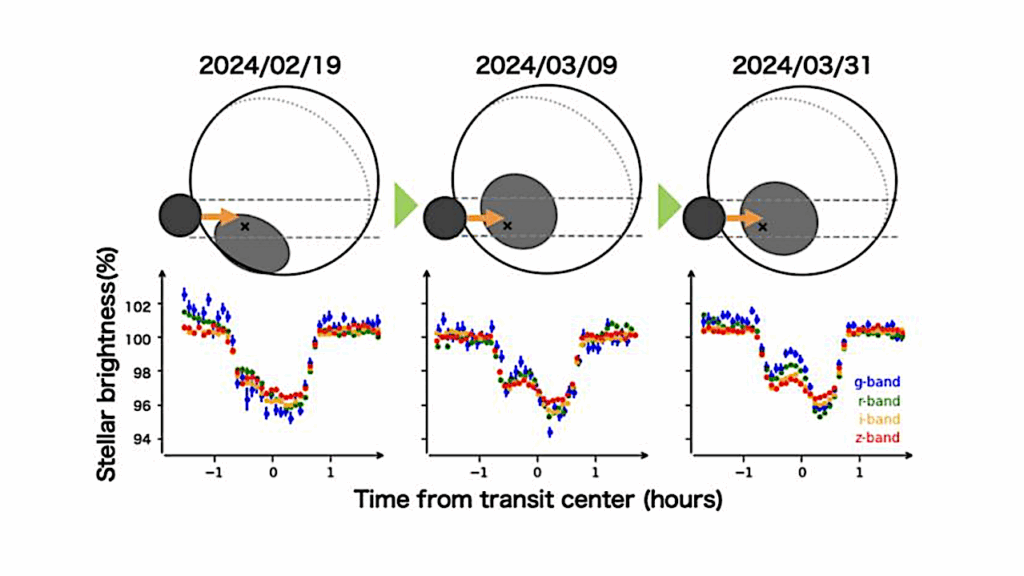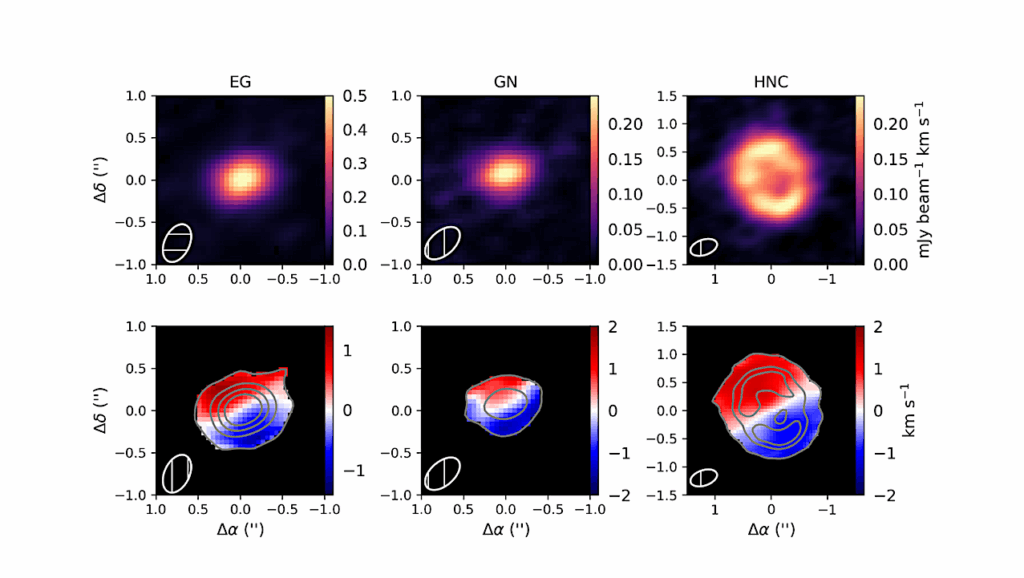On The Formation Of Terrestrial Planets Between Two Massive Planets: The Case Of 55 Cancri

Considering the huge computational resources required by smoothed particle hydrodynamics (SPH) simulations and the overestimation of post-collision materials from perfect merging, we develop a statistical method to deal with collisions during the formation of planetary systems by introducing random material loss.
In this method the mass and water content lost by the sole outcome from every merger vary randomly within a range dependent on the total mass and water content of colliding bodies. The application of the random loss method to the planet formation in the solar system shows a good consistency with existing SPH results.
We also apply this method to the extrasolar planetary system 55 Cancri which hosts (at least) five planets and study the formation of terrestrial planets between the outermost two planets. A disk with 500 Mars mass embryos in dynamically cold orbits before the late-stage accretion phase is assumed. Scenarios with different amounts of planetary embryos and different loss parameters are adopted in our simulations.
The statistical result from hundreds of simulations shows that an Earth-like planet with water inventory of roughly 6 Earth ocean could form between 55 Cnc f and d. It may reside between 1.0 and 2.6 AU but the most likely region extends from 1.5 to 2.1 AU. Thus the probability of this planet being in the potentially habitable zone (0.59–1.43 AU) is relatively low, only around 10\%. Planets 55 Cnc f and d could also be shaped and gain some water from giant impacts and consequently the orbits of them may also change accordingly.
Lei Zhou, Rudolf Dvorak, Li-Yong Zhou
Comments: Accepted for publication in MNRAS, 16 pages, 13 figures, 5 tables
Subjects: Earth and Planetary Astrophysics (astro-ph.EP)
Cite as: arXiv:2105.10105 [astro-ph.EP] (or arXiv:2105.10105v1 [astro-ph.EP] for this version)
Submission history
From: Lei Zhou
[v1] Fri, 21 May 2021 03:11:11 UTC (966 KB)
https://arxiv.org/abs/2105.10105
Astrobiology,








